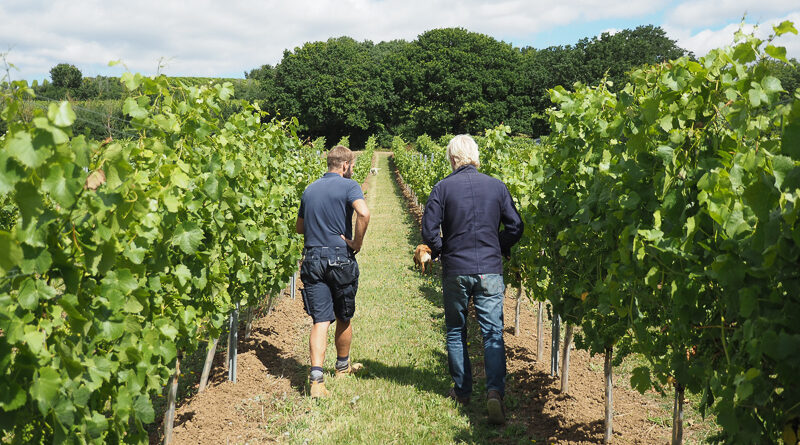The Crouch Valley, Essex: a leading region for English still wines
The Crouch Valley in Essex is turning out to be a hotspot for still English wines. The reason? It is one of the driest and warmest parts of the UK. And coupled with this, its clay-based soils with their high smectite content are better for viticulture than people have previously thought (see the box below). Many famous wineries based in other, somewhat trendier parts of the country buy grapes from Essex, and the regional identity of these grapes is lost. It’s for that reason that Essex isn’t getting the attention it deserves as a viticultural region.
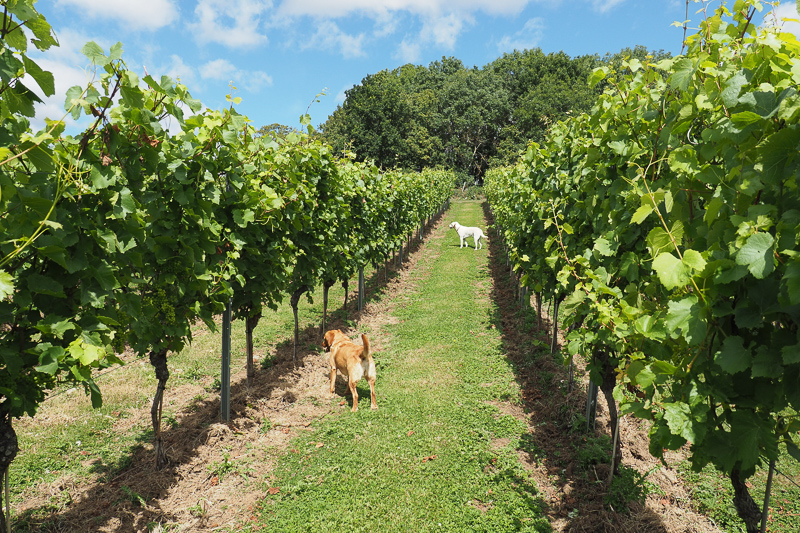
The proximity of the River Crouch helps many vineyards avoid trouble from spring frosts. This is another factor that lets them achieve enviable ripeness, because on warm sites budburst is a little earlier, and this can bring the tender shoots into the danger zone for frost damage.
CLAYS
There are different sorts of clays, and the type of clay can be significant for viticulture. Clays are composed of layers of silica and aluminum, but the actual structure can vary. In simplified form, clays can be separated into two different groups, called kaolinite/illite and smectite/montmorillonite. Kaolinite/illite clays don’t swell much when they are wetted, and have a low “cation exchange” capacity (meaning, they have limited ability to hold nutrients and exchange them with plant roots). Smectite/montmorillonite clays swell more when wetted and then crack when they dry out. They are stickier and more plastic, and have a high cation exchange capacity. A “clay” soil isn’t composed solely of clay, but consists of different proportions of clay combined with other particles. The proportion of clay is important: a high clay content will allow the soil to store more mineral ions, and then exchange them with the roots, especially if the clay is smectite rather than kaolinite/illite.
One of the key vineyards in the Crouch Valley is Martin’s Lane – they make a little wine under their own label, but most of their grapes are sold to others, and there’s a long waiting list. The vineyard is managed by Duncan McNeill, and I visited it with him.
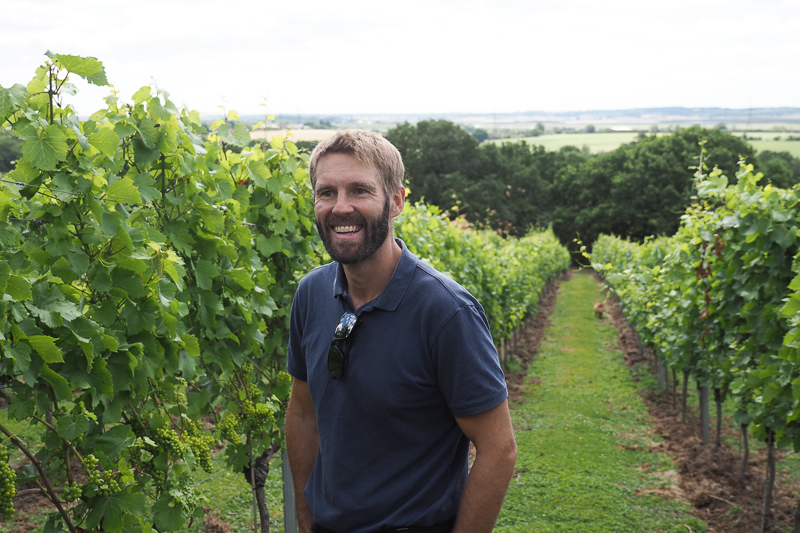
Duncan says that the Crouch Valley is particularly promising for still wines, which require grapes that are riper than sparkling wines. He’s had Pinot Gris at 94 Oeschle (22.5 Brix, 13.2% potential alcohol) with acids down to 8 g/l. ‘In 2018 the Chardonnay from here was 98 Oeschle,’ he says. That’s 13.8% alcohol. ‘There are so many people growing grapes for sparkling wine, why would do the same if we have the potential to get the grapes really ripe?’
So still English wines are suddenly becoming interesting, I suggest, after a long time of not being. And part of the reason is that in some sites, proper ripeness is being achieved regularly. ‘If you do your work in the summer as a grower, you can leave your grapes on the vine for longer. What stops people from getting ripe fruit is that they have to pick because of botrytis. If you have loose bunches with thicker, more robust skins, then you are able to leave the grapes on the vine for longer.’
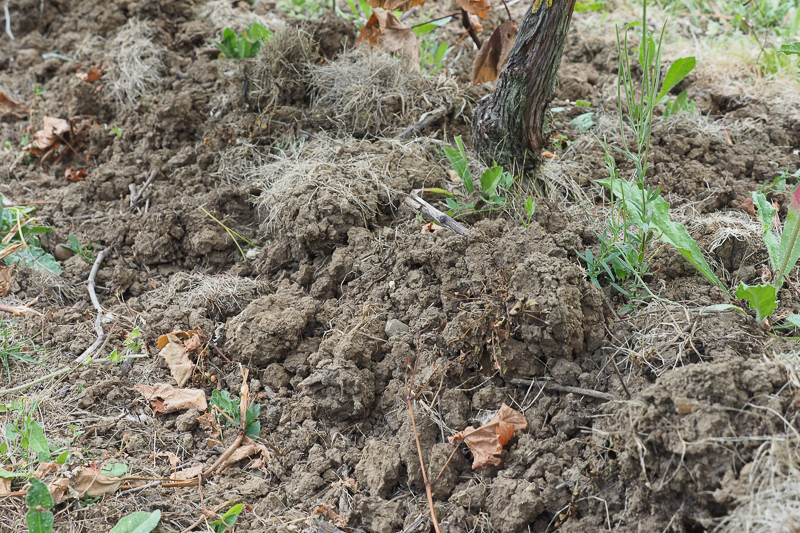
Martin’s Lane is based in Stow Maries, near Maldon. The vineyard was planted by a partnership of local families who bought some favourably situated meadowland on the north side of the Crouch Estuary in 2008. They now have 30 acres of vineyard, 7 of which were planted in 2020. They are also planning to plant another 13 acres on another site.
What is his approach to weed management? At Martin’s Lane, weed control is with a single application of glyphosate in March, followed by manual control using a disc weeder, a roller hacker and a finger weeder. Duncan says he’s looking to move away from glyphosate altogether. Is he looking at cover-cropping? ‘Yes,’ he says, ‘but I’ll be honest with you, it’s really difficult to get right. The issue is timing. It’s even hard with grass: we put a load of grass down in the spring because we couldn’t get it on in the autumn because it was so wet. Most of it has failed. I agree with cover-cropping, and the reason we are starting with it is to try to induce late season stress, so there’s a little bit of leaf senescence, rather than picking the grapes when the leaves are still bright green. If you have the start of leaf senescence, the seeds will start going brown as well.’
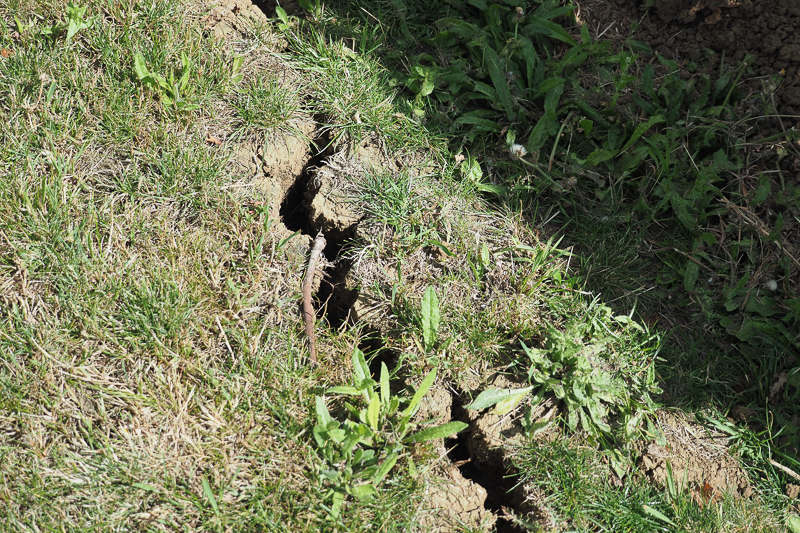
What’s his mildew strategy? ‘Dare I say it, we are alright. Powdery mildew is dealt with by three sprays. Yellow inflorescences, mid flowering and post flowering.’ He uses sulfur and a systemic fungicide. They use four of these, alternating them. ‘I’ll never use the same fungicide twice in succession.’ But one of the side effects of not spraying much sulfur is that they got some problems with bud mites. This led to stunted shoots in the following season. While sulfur can control bud mites, once they have been let in it doesn’t work, and so some treatment will be needed the following spring. For downy mildew he sprays Mancozeb, and if it occurs they use Metalaxyl. ‘Because I’m a contractor, it’s a risky one to go organic. I’d like to. I have a 10 acre vineyard of my own and it’s in the back of my mind.’
One of the owners of Martin’s Lane, Roy Martin, told me a brilliant story of how a wealthy Canadian vineyard owner, Anthony von Mandl of the Mission Hill group of wineries in the Okanagan, once tried to buy their vineyard. This group, which has recently been renamed the Iconic Wineries of British Columbia (IWBC) includes seven wineries: Mission Hill (where it all began), Cedar Creek, CheckMate, Road 13, Liquidity, Red Barn and … Martin’s Lane.
‘When we first registered Martin’s Lane in this country, we weren’t aware that there was another one of exactly the same name in Canada,’ says Roy. But he saw a tweet from Flint Wines who said that they would soon be bringing in the wines from Martin’s Lane in Canada. ‘When we first registered our name in 2009 we used a registration attorney who’s quite a good friend of mine in Colchester,’ says Roy. ‘I said there’s something a bit odd here: there’s someone here with our name and they want to launch wines under the Martin’s Lane name in the UK. We’d better just say nicely to them that they can’t. He said, you are quite right, and while we’ve been talking I’ve just looked it up and they’ve put in an application for using Martin’s Lane in connection with their wines in Europe more generally. And Bacardi Martini have objected, because of Martini.’
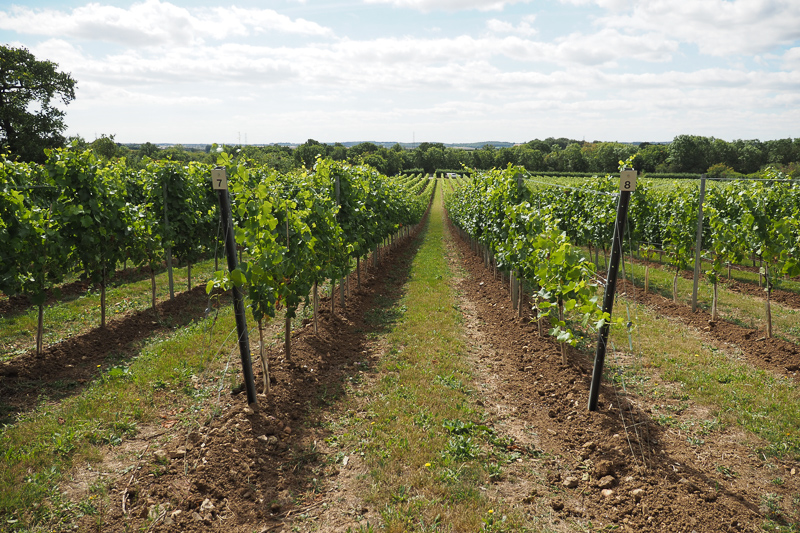
‘So we dropped them a line saying they can’t use that name in the UK. A few days later, I got a call from a man in Vancouver, who said it looks like we have a problem here. What about if we pay you royalties to bring our wines in? I said that I wasn’t mad on this idea: we are trying to produce top notch wines the same as you do. Most of our business is selling grapes to the wider UK industry, but around 10% of our fruit goes into our own wines.’
‘He said, do you want to sell us the name? I said, that’s not all that appealing either.’ One of the reasons is that while the vineyard is named after an old track that runs through it, Martin is also Roy’s surname, and he’s attached to it.
‘He finally said, do you want to sell us the vineyard? I said, it’s not really for sale, but if you want to make us a stupid offer, it’s run as an LLP and I’m not the sole owner. There’s a group of us, and if you made me an offer I’d have to put it to them. He rang me a couple of days later and was touting figures about, and then he said I’ll tell you what, we’re coming over to see you.’
‘Mr von Mandl has his own private jet, and he flies into Stansted with a close friend of his. I put them up at Le Talbooth, which is a well known restaurant in Essex. It’s probably the top restaurant/wedding venue in the county, and I know the management there fairly well. My cousin Graham and I took them to the restaurant that evening, and the following morning they came down to the vineyard, with Duncan McNeill, and they seemed really interested in it. Initially, they were offering just to get the name, and that is the reason they turned up, but they were also interested in the vineyard. Duncan was in touch with the various viticulturists they have in Canada, and we gave them samples of all the wines, and they made an offer.’
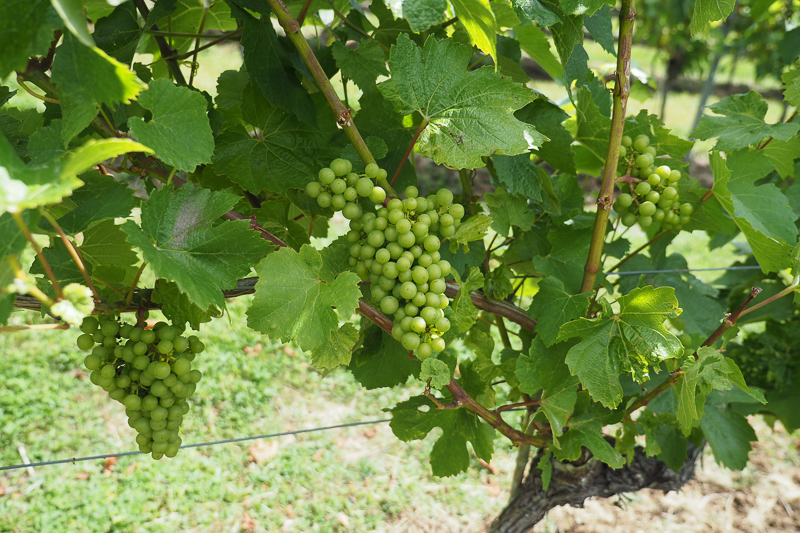
‘We’d only been going about five or six years and have no on-site facilities. At the time we were about 16 acres. It was probably a pretty fair offer that they made, but we just didn’t have the appetite to sell. How much money do you put on the name? We don’t know, and to a guy with all that money it was probably worth a bit more than that anyway. It went quiet after that. I think we are very much concentrating on finishing the project.’
Roy adds, ‘there are a lot of people who have planted along this north side of the Crouch Valley now. There are probably more vineyards in the Maldon administrative area than anywhere in the UK now.’
Most of the Martin’s Lane grapes are sold to other wineries. ‘We sell all over the place. Some I can’t tell you where I sell them because I’ve got a signed confidentiality agreement. There’s not many people we haven’t sold to. Lyme Bay take a load of stuff from us. Flint Vineyard in Norfolk take a lot from us; Denbies take a lot from us. We have got some quite important clients. I’m tending now just to hone in on those who are looking for high ripeness stuff. Even in 2019 we were getting to 90 Oeschle. If we can get fruit to ripeness levels like this even in the UK, we have a different type of future. We are making still wines unchaptalised to 12.5/13%. We have got some nice wines and we’ve got into some nice places with those wines.’
‘It’s a lovely site,’ says Roy. ‘We are right on the river Crouch and we get some great fruit here. We have surprised ourselves in a way.’
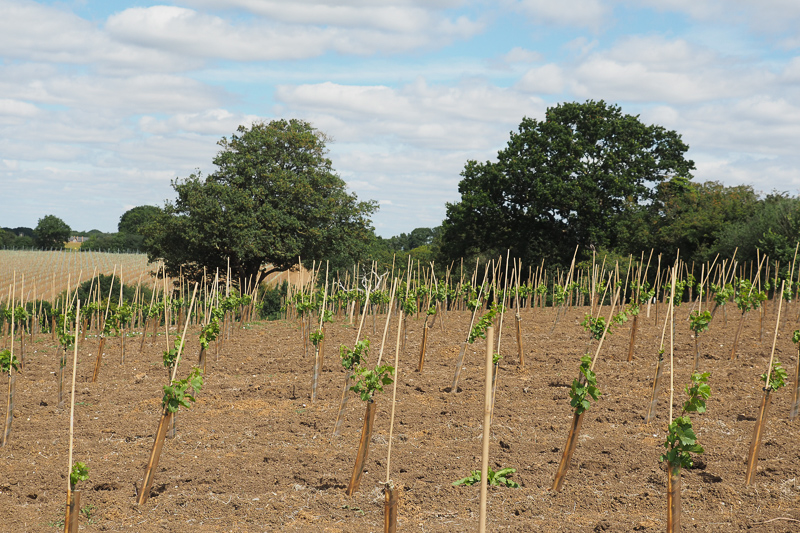
We spent some time looking at new plantings on the top of the hill, which are also part of Martin’s Lane. There are views from here across to another vineyard called Crows Lane Estate, where there are 8 acres of Pinot Noir planted in 2018, and also another 16 acres contracted to Danbury Ridge.
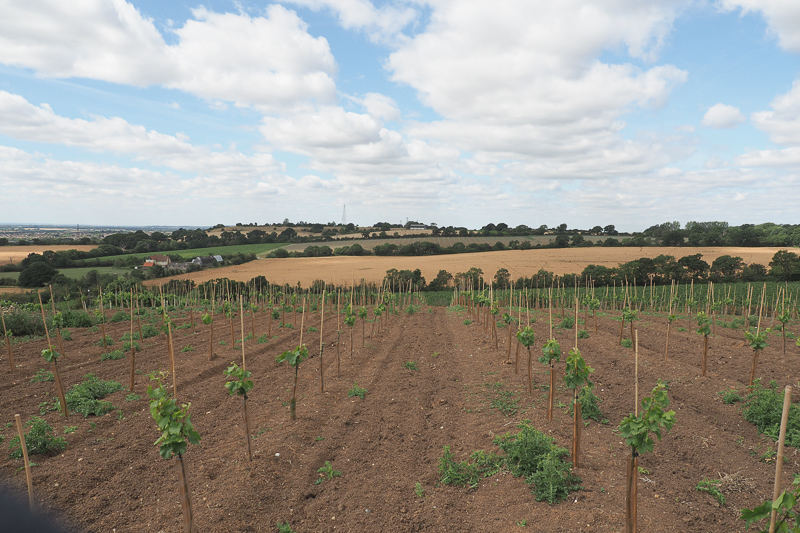
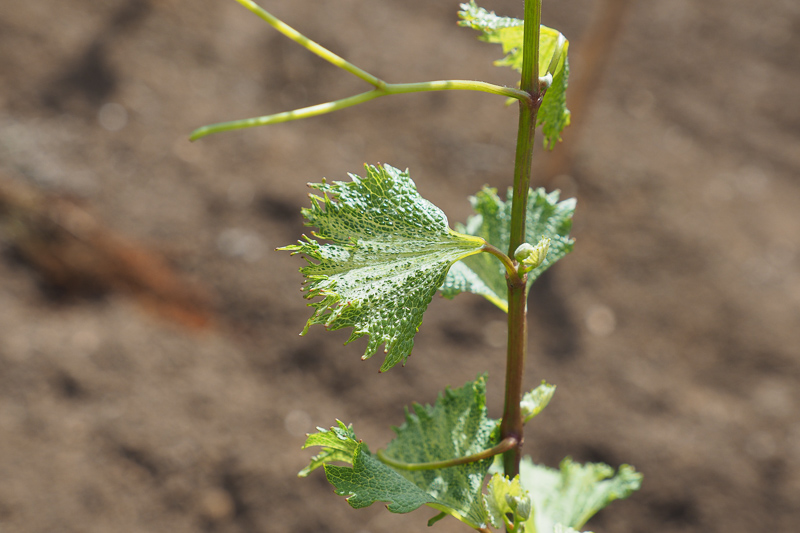
Our second stop was the Crouch Valley Vineyard. ‘This was planted in 2007,’ says Duncan. There are 25 acres of vines here. The soils? ‘It’s London clay. It’s all the same: everything except Danbury Ridge. This is about 15 minutes from here, and has more sand and gravel.’ Danbury Ridge also source grapes from other vineyards with London clay, including Crows Lane. These have a high smectite content, and are very good vineyard soils. [Danbury Ridge is worth mentioning here because this impressive operation has focused on still wines, and are achieving rave reviews for their Chardonnays and Pinot Noirs; they are probably the most celebrated still wine producer in the UK at the moment.]
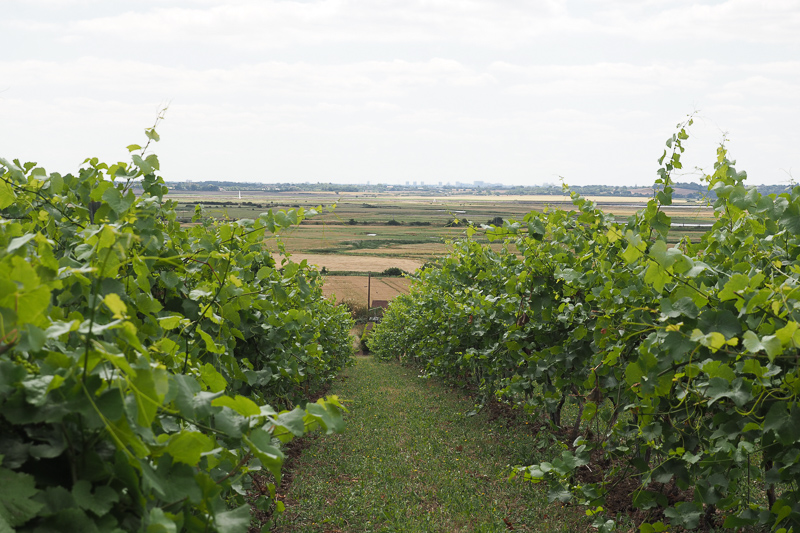
Duncan’s consultancy company works for other local vineyards, too. He names Crouch Ridge, Clay Hill and High House Weddings. ‘And we’ve just put in 33 hectares for Kingscote, Mark Dixon’s outfit, MDCV UK,’ he adds.
Ben Walgate at Tillingham gets grapes from here. ‘The grapes are some of the best we buy, year in, year out,’ he says. ‘They are always clean with good ripeness. The really interesting thing about the fruit from here is that the Pinot Noir ferment is faster, and the Pinot Blanc is glacial – it takes a long time. It goes through, none the less. It’s a long, continuous slow ferment, and the wines are among the best we produce.’
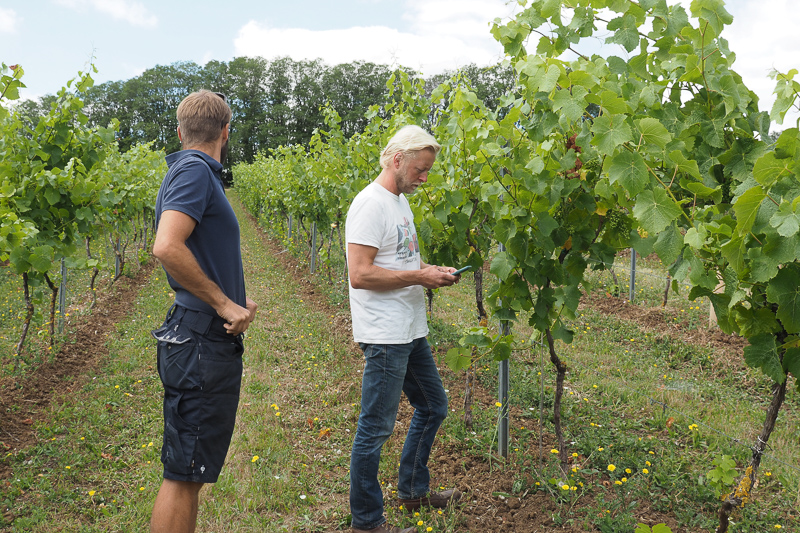
The trellising in the Crouch Valley Vineyard is interesting – it is a high wire sprawl. ‘I first met this when I came to New Hall Vineyard,’ says Duncan. ‘At the time this was done badly. The idea behind it is low cost growing. There is a bit more shading because the fruit is dispersed more through the canopy, and it is a freer way of growing grapes. You get a bit more leaf area. The shoots facing up don’t get trimmed at all. It’s a less dense plantation: these are 3 m x 1.2 m. Most of our VSP plantings are 2.4 x 1 m.’
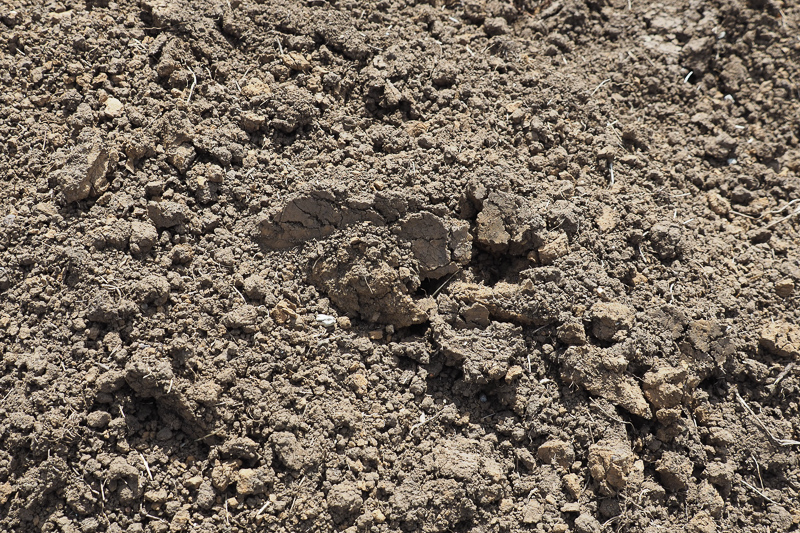
‘A grape vine is a plant that wants to spread,’ says Duncan. ‘In Europe, they call it a liana, and it wants to spread away. Having a wider row spacing and plant spacing, you can allow that vine to spread. You aren’t having to cut such lumps off it at the pruning stage.’
In the wine world there is a lot of concern about trunk diseases, especially one called ESCA, which limit the life of vineyards. Is trunk disease an issue in England? ‘Yes, you’d be a fool to say no,’ says Duncan. ‘I don’t believe it is coming from the vine nurseries. A lot of it is down to pruning.’ He thinks that part of the problem is giving staff that haven’t been trained properly some electric secateurs. ‘With a pair of electric pruners you can cut through wood without any effort. If you’ve not been taught and you don’t understand grape vine physiology, and the implications of the cuts you make, then very quickly you can cause a lot of dead or dessicated vascular tissue around the crown. This can cause a lot of blockage internally. We’ve seen vineyards 12 or 13 years old and they’ll start to have apoplexy, and its generally in August. You have full canopy, full crop and then the vines are starting to stress. They reckon the ESCA has to be in the vine for four years before you get the apoplexy. You get tiger stripe symptoms on the leaf and it goes quite quickly.’
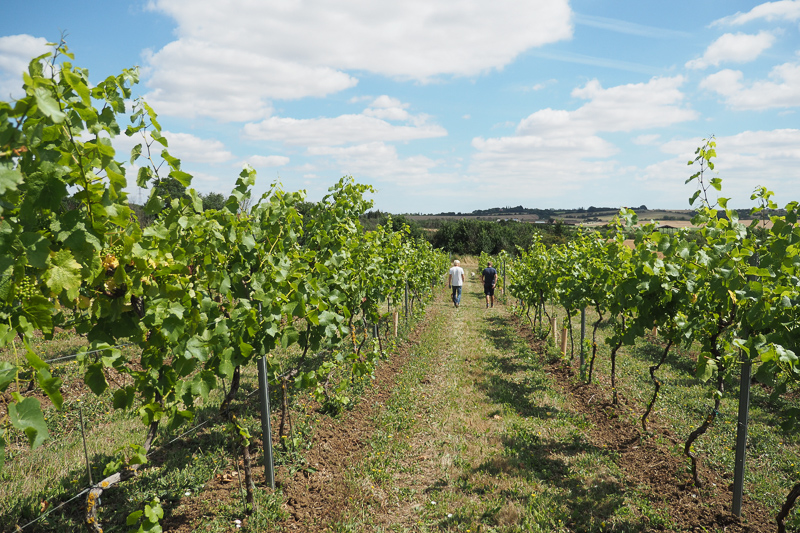
It was a quick introduction to this lesser-known but increasingly important English wine region. As the move to making better quality still wines gains ground, it’s special spots like this, where it is possible to get fully ripe grapes, that will come to the fore.

